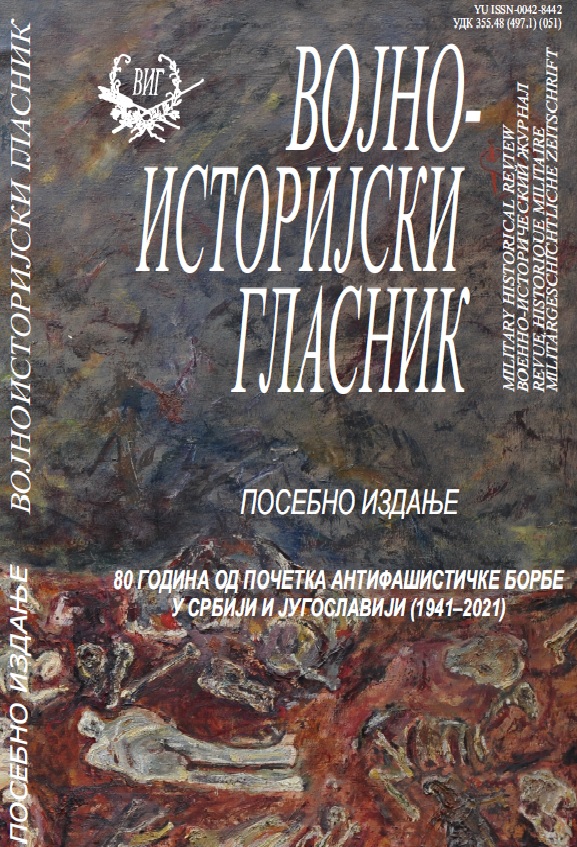SLOVENIAN PARTISAN RESISTANCE OF 1941
SLOVENIAN PARTISAN RESISTANCE OF 1941
Author(s): Blaž TorkarSubject(s): History, Recent History (1900 till today), Special Historiographies:, WW II and following years (1940 - 1949), Fascism, Nazism and WW II
Published by: Institut za strategijska istraživanja
Keywords: occupation; Yugoslavia; Dravska Banovina; armed resistance; Liberation Front; Communist Party of Slovenia; Slovenian People’s Party; Partisan Army
Summary/Abstract: The Liberation Front of the Slovene Nation, in which the leading role was assumed by the Communist Party of Slovenia, defined armed resistance against the occupation forces in the Slovenian territory as a path towards national liberation and unification with the ethnic territories that formed a part of the German and Italian states. The first, smaller, resistance activities were recorded shortly after the occupation of Dravska Banovina, when the preparations for an uprising or its beginning sporadically sprouted both within and out of the Communist Party of Slovenia. The German attack on the Soviet Union added fuel to the resistance movement, which began to develop actively in July 1941. This brought an end to a period of chaos within the Communist Party of Slovenia, when the leadership and most of the members opted for resistance. At the time, 41 company‐level units were formed with a strength of 15‐50 Partisans. They were poorly armed and used guerrilla tactics, but, nonetheless, attempted to carry out a couple of larger actions, such as an action to prevent the expulsion of the Slovenian population. The organizers of the resistance movement sought to encourage a wider uprising of the Slovenian population, which succeeded on a larger scale for the first time in December 1941 in the Upper Carniola region.
Journal: Vojnoistorijski glasnik
- Issue Year: 2022
- Issue No: poseban
- Page Range: 206-222
- Page Count: 17
- Language: English

